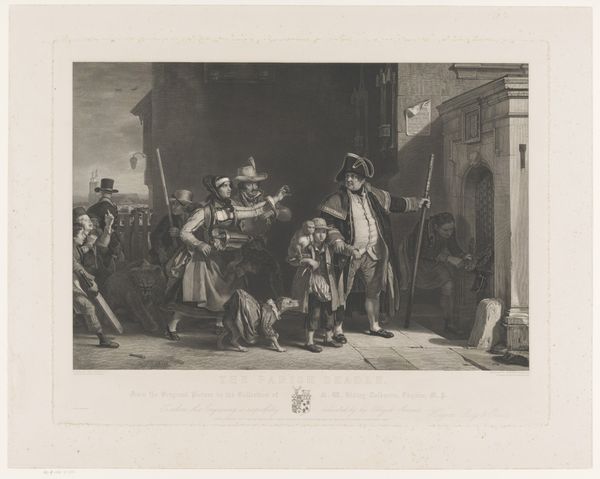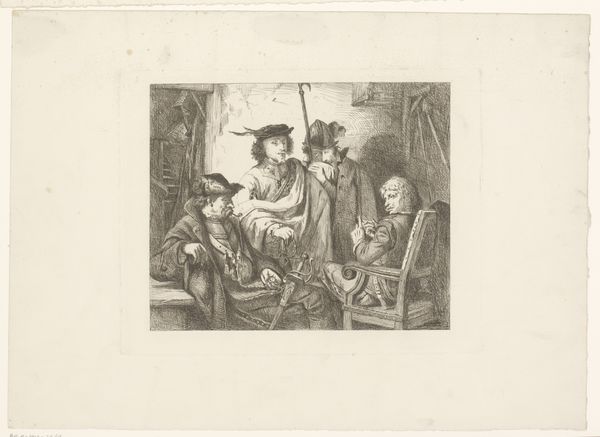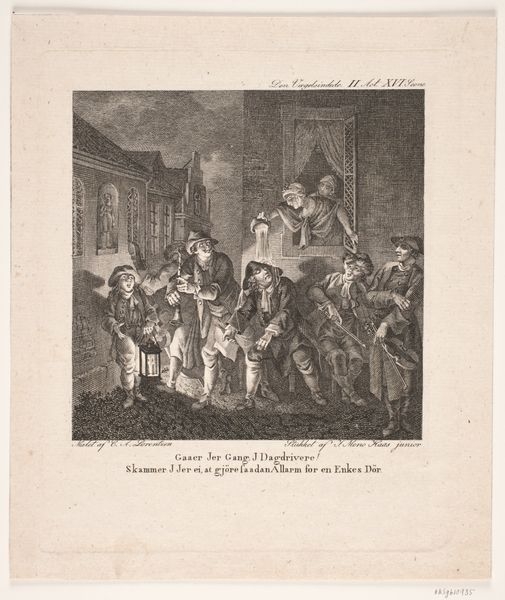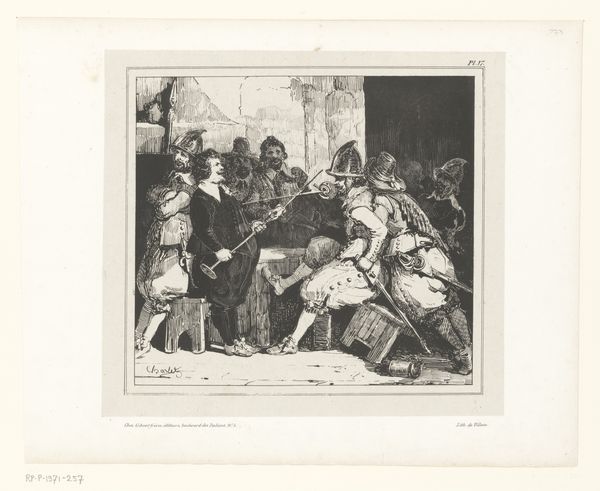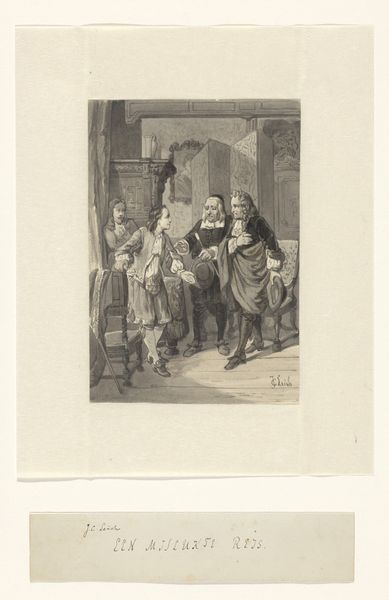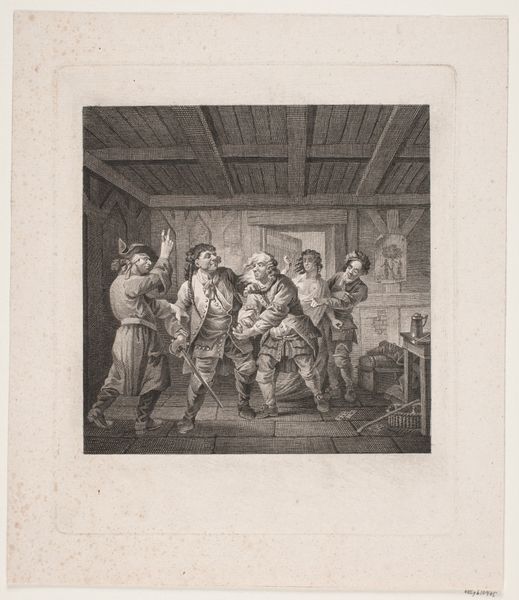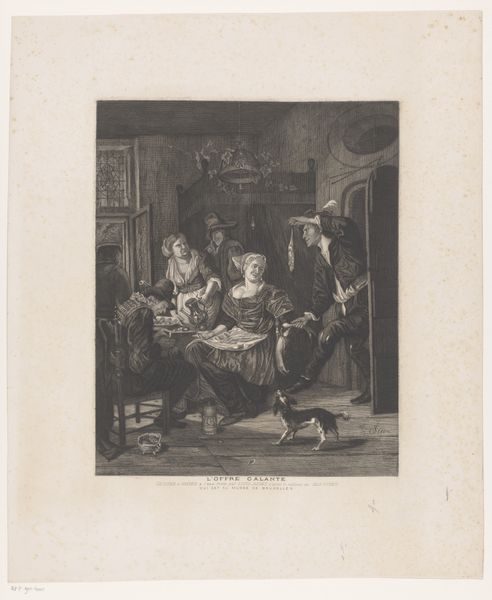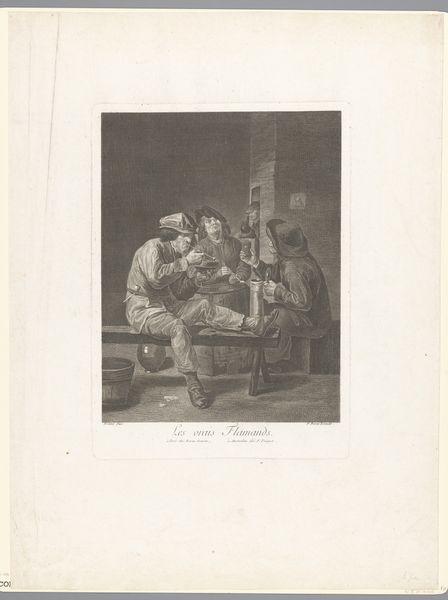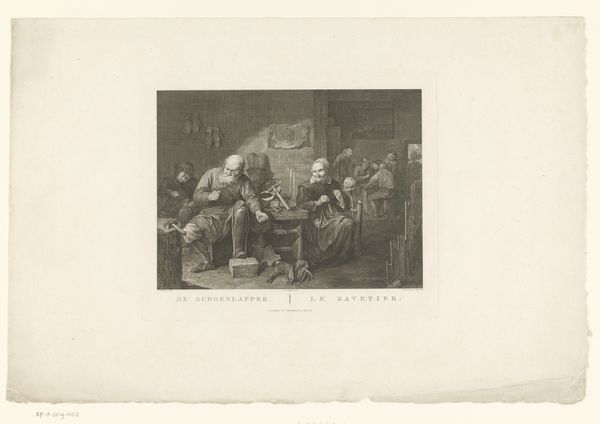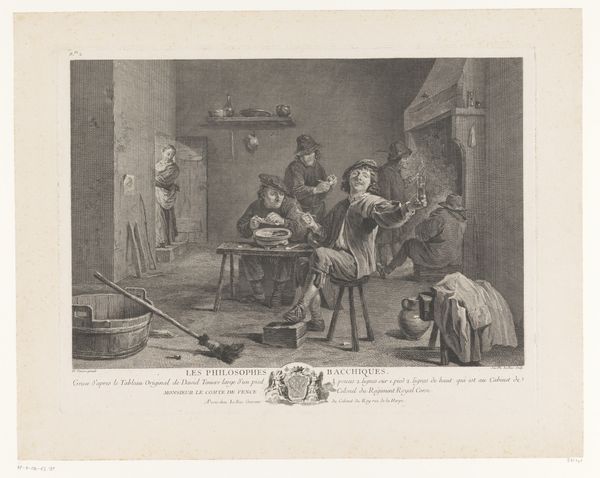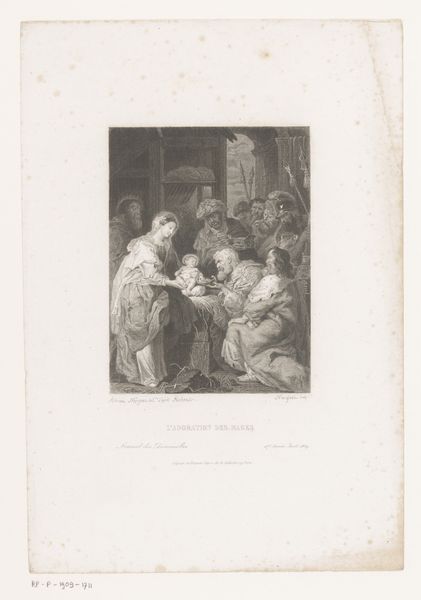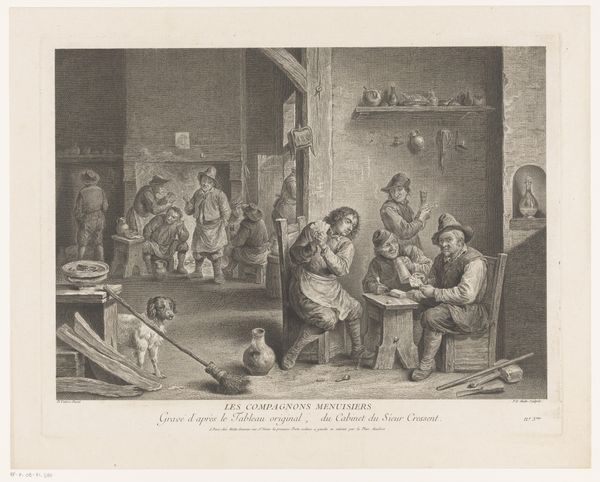
Dimensions: height 130 mm, width 203 mm
Copyright: Rijks Museum: Open Domain
Curator: Let's spend a few moments with “Herberg met musicerende boeren,” or "Tavern with Music-Making Peasants." It's attributed to Gustav Eilers and thought to be from between 1844 and 1911. You can find this print in the Rijksmuseum. What’s your initial impression? Editor: My eyes are drawn to the details—the fine lines of the engraving! The entire scene feels rich with the textures of the era. From the wooden benches to the musician's garments and instrument. It really gives us a sense of what life might have been like at the time. Curator: Absolutely. The engraving technique here is remarkable in conveying not only texture but the social dynamics at play. Observe the grouping of people. Note how it’s subtly coded: class, gender roles, even who is being allowed leisure, and who isn’t. The woman, almost out of the painting... Editor: That’s an excellent point. Think about the means of its production, though! An engraving like this required specialized labor, each stage contributing to its value as a commodity and a signifier of bourgeois leisure. The social dynamics aren't just portrayed; they are reinforced through its very existence as an artwork. Curator: Indeed. This brings up important questions. How did such genre scenes function? Were they documenting life, shaping perception, or both? I also wonder about the audience consuming this piece. To what extent did prints like these codify or even perpetuate existing power dynamics? It’s interesting that an original source does not even mention Jan Molenaer to which the painting is attributed at other Museums. Editor: Fascinating! And speaking of codifying, let's look at the image’s availability—consider its journey into the hands of collectors and then its subsequent placement within museum walls. What choices drove this specific engraving’s preservation, and who made those decisions? This act further validates its position within art history and reinforces an inherently capitalist structure within our society. Curator: That brings us to a rich and complex layering of historical and contemporary narratives to contextualize this piece in the contemporary social context. The simple fact that it's made with print enables many possibilities of social change since printing, per se, is already part of activism. It becomes much more powerful because of the social implications embedded in the act of artmaking. Editor: A sobering yet empowering takeaway: the artwork’s materiality and placement inevitably place it in this very cycle of material production, value, and re-evaluation that continues to this day.
Comments
No comments
Be the first to comment and join the conversation on the ultimate creative platform.
